Table of Contents:
- Marketing by moments
- Determine the right mix of marketing channels
- To each its own – benefits and limitations
- Factors that affect choice of communication channel
- Measuring effectiveness of your campaign
In the era of smartphones, apps, online shopping and serious attention deficit, customers want brands to reach them via the channel of their preference. On the other end of the spectrum are marketers that have one too many channels to choose from to render their marketing communication.
The conundrum becomes intensive when you look at these stats:
- SMS – 90% of SMS are read within the first three minutes of delivery
- Email – Email has an average ROI of $38 for each $1 spent
- Push – Push notifications show up to 40% CTR, and the best perform 4x better than worse.
- In-app – Apps using in-app messaging average 21% more monthly app launches.
- Display Ad- Display ads attract less than 2 clicks for 1000 impressions (0.17% CTR).
- Web Message- Web Messages record average CTR of 3.7% globally.
The power lies with customers; marketing is no longer marketer-centric but customer-centric.
The performance of channels varies drastically, some attract good CTR’s, some are cost effective, and some are easy to deploy. It is not like the old days where direct mail, newspaper ad, were enough to grab eyeballs.
Nowadays, marketers face the problem of too many to choose the right mix of channels.
Marketing by moments
82% of smartphone users turn to their phone to influence a purchase decision while in a store. Share on XMoments are behaviors and psychological states exhibited by consumers as they interact with the internet to-search, to-do, to-buy, to-learn or to-discover something.
These are intent-rich moments when decisions are made, and preferences get shaped.
Thus, marketers need to influence customers across these critical moments of truth. And, using the right mix of marketing channels is the first step towards effectively influencing users during these moments of truth.

In 2005, A.G. Lafley the then CEO of Proctor & Gamble said –
“The best brands consistently win two moments of truth, the First Moment of Truth (FMOT) occurs at the store shelf, when a consumer decides whether to buy one brand or another. The second [SMOT] occurs at home, when she uses the brand – and is delighted, or isn’t.”
In 2011, the search engine giant Google, coined the term Zero Moment of Truth [ZMOT ~ Zee Mot], the moment where first impressions happen and the path to purchase often begins. It’s a moment where marketing happens, where information happens, and where consumers make choices that affect the success and failure of nearly every brand in the world.
Furthermore, there’s UMOT, the Ultimate Moment of Truth where experiences are shared to build impressions that later becomes ZMOT for new customers.
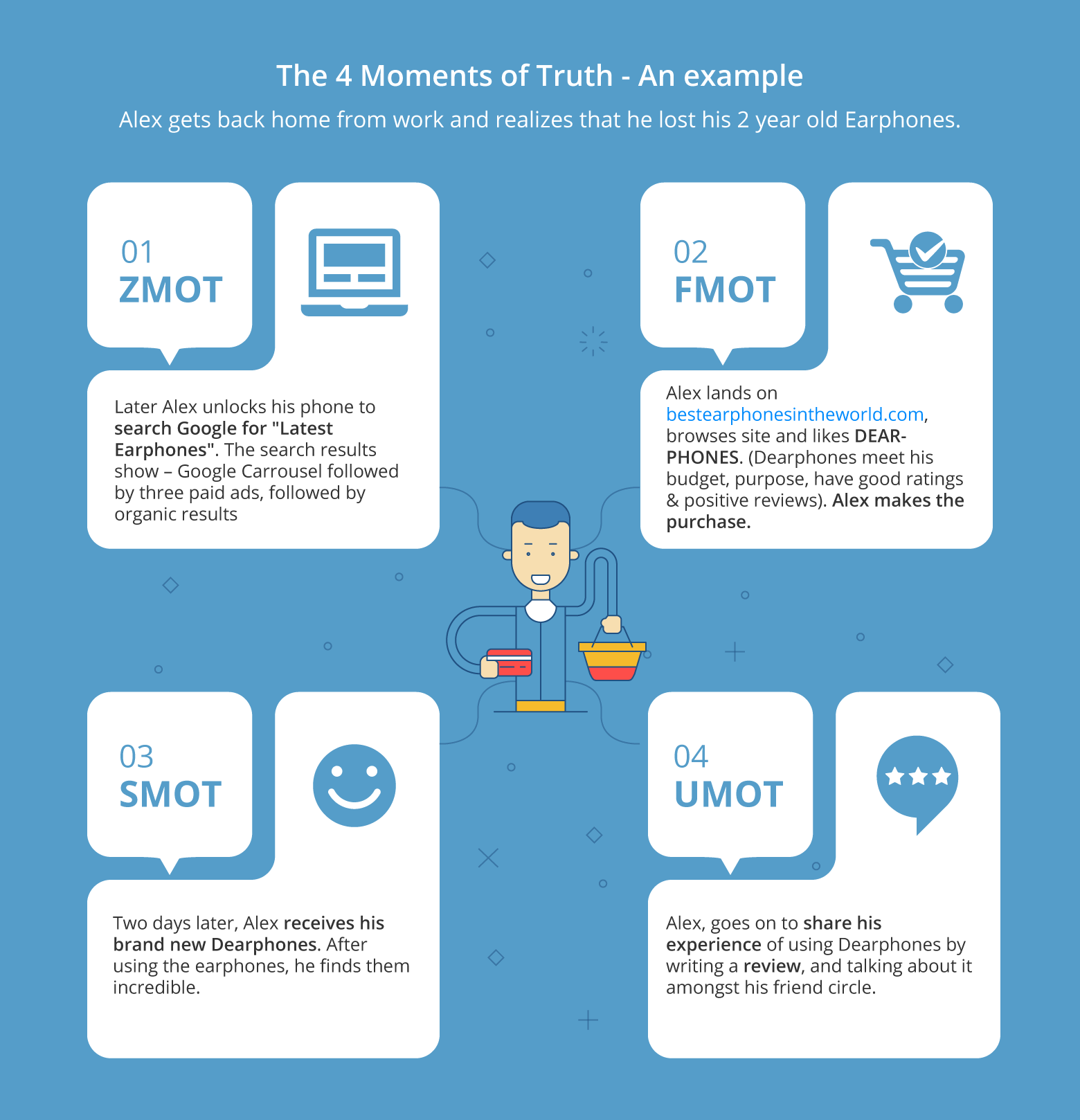
Determine the right mix of marketing channels
We have already seen the various factors that influence the choice of communication channels. Here, we showcase how certain channel attributes affect the choice of channel depending on the use-case in consideration.
For instance, for Cart Abandonment – Email, Web Message, SMS are preferred communication channels as these channels satisfy the most attributes (highlighted in the table).
Appropriate Channel Selector as per Use-Case:
Note– Use the drop down to select a use-case. All critical values that affect the choice of channel are highlighted. Subsequently, the preferred channels in the last column are also highlighted.
For the sake of simplicity, we have kept the attributes and use-cases industry agnostic.
| Deliverability | Message Length | Reachability | Interactivity | Retrievability | Cost | Rich media | Channels |
|---|---|---|---|---|---|---|---|
| Medium | 20540* | Medium | Two-way | Yes | Medium | Yes | |
| High | 2500* | Medium | Two-way (survey) One-way (Notification) | No | Low | Yes | Web Message |
| High | 255* | Low | Two-way (survey) One-way (Notification) | No | Low | Yes | In-app |
| Low | 169* | High | One-way | No | Low | Yes | Push N |
| Low | 160* | High | Two-way | Yes | High | No | SMS |
| Deliverability | Message Length | Reachability | Interactivity | Retrievability | Cost | Rich media | Channels |
|---|---|---|---|---|---|---|---|
| Medium | 20540* | Medium | Two-way | Yes | Medium | Yes | |
| High | 2500* | Medium | Two-way (survey) One-way (Notification) | No | Low | Yes | Web Message |
| High | 255* | Low | Two-way (survey) One-way (Notification) | No | Low | Yes | In-app |
| Low | 169* | High | One-way | No | Low | Yes | Push N |
| Low | 160* | High | Two-way | Yes | High | No | SMS |
| Deliverability | Message Length | Reachability | Interactivity | Retrievability | Cost | Rich media | Channels |
|---|---|---|---|---|---|---|---|
| Medium | 20540* | Medium | Two-way | Yes | Medium | Yes | |
| High | 2500* | Medium | Two-way (survey) One-way (Notification) | No | Low | Yes | Web Message |
| High | 255* | Low | Two-way (survey) One-way (Notification) | No | Low | Yes | In-app |
| Low | 169* | High | One-way | No | Low | Yes | Push N |
| Low | 160* | High | Two-way | Yes | High | No | SMS |
| Deliverability | Message Length | Reachability | Interactivity | Retrievability | Cost | Rich media | Channels |
|---|---|---|---|---|---|---|---|
| Medium | 20540* | Medium | Two-way | Yes | Medium | Yes | |
| High | 2500* | Medium | Two-way (survey) One-way (Notification) | No | Low | Yes | Web Message |
| High | 255* | Low | Two-way (survey) One-way (Notification) | No | Low | Yes | In-app |
| Low | 169* | High | One-way | No | Low | Yes | Push N |
| Low | 160* | High | Two-way | Yes | High | No | SMS |
| Deliverability | Message Length | Reachability | Interactivity | Retrievability | Cost | Rich media | Channels |
|---|---|---|---|---|---|---|---|
| Medium | 20540* | Medium | Two-way | Yes | Medium | Yes | |
| High | 2500* | Medium | Two-way (survey) One-way (Notification) | No | Low | Yes | Web Message |
| High | 255* | Low | Two-way (survey) One-way (Notification) | No | Low | Yes | In-app |
| Low | 169* | High | One-way | No | Low | Yes | Push N |
| Low | 160* | High | Two-way | Yes | High | No | SMS |
- Deliverability: The percentage of total users approachable via. a channel (function of opt-ins, unsubscribe, spam rate, hard bounce, DND etc.)
- Message Length: The character limit of a message allowed on the channel (* the character limit is subject to change based on device type, message layout etc.)
- Reachability: The general frequency of use of the channel by customers.
- Interactivity: Two way or one way mode of communication
- Retrievability: The provision to store the message for post interaction referencing
- Cost: Operational cost attached to sending message
- Rich media: The property of channel that allows the use of rich text/media.
Let’s look at the channel specific pros and cons.
To each its own – benefits and limitations
| Channel | Benefits | Limitations |
|---|---|---|
| SMS | Delivered instantly Reliable (almost no spam) Relatively high views Cost effective |
Limited message length Prone to opt-outs if overused Text is vulnerable to be lost in clutter No use of rich media (GIF) |
| Good ROI Easy to measure, deliver Low cost Message length not a constraint Allows use of rich media |
Prone to land in Spam folder Regulatory laws (Can-spam act) |
|
| Push Notifications | Provides for various formats- carousels, rich-push, text Easily personalized Helps boost app launch Easy to target users using geofencing, user attributes etc. |
High Opt-out rates Overuse leads to app uninstall Requires personalization to be effective Requires to be sent at apt time |
| In-app Message | Allows for two way communication Sent to a captive audience Registers high interaction Ideally helps in guiding users, gather feedback etc. |
Limited reach Irrelevant messages backfire in app uninstalls |
| Web Message | Allows for two-way communication (notification/survey) Helps in building guided flow for site visitors Helps in highlighting new feature or promotions Effective for generating leads (capture user details) Efficient in taking real-time feedback |
Intrusive to the user experience on site Overuse leads to visitors bouncing off |
TL,DR- Every channel has its pros and cons, and thus these must be weighed before you go on to send your marketing message.
Factors that affect choice of communication channel
- Buyer lifecycle stage:
The usual buyer lifecycle stages are awareness, consideration, comparison, conversion, retention, advocacy. Your choice of channel to communicate with top of the funnel user will depend on their first interaction. Likewise, consider an anonymous user visiting your site for the first time, the obvious choice will be to use Web Message as channel (to convert anonymous user to contact). - Channel engagement rate: (historic/industry average)
Past is a predictor of future, and our expectation from future. Ask yourself, how the channel has performed for your business in the past? What are the industry benchmarks? How the competition is doing on the channels? - Type of message:
(Promotional /Transactional / Re-engagement / Educational message)
In my recent experience of buying from Amazon, I received an email and SMS, almost simultaneously, an hour before the product was scheduled to deliver. Moreover, Amazon solicited product review only via email. - Length of message:
Nearly all channels have an optimum length of message. Email is one channel that is used to render fairly descriptive messages like change in usage policy etc. Text messages have a bar of 160 characters, and push message length varies with platform and device e.g. iOS push for iPhone 6 Plus has limit of 169 characters. - Frequency of message:
Given that the frequency of message is predetermined as in the case of monthly/weekly newsletters it is logical to fix a channel. Monthly Newsletter is preferably sent over email. Other type of communication like flash sale once a season promotional message (flash sale). - Channel reach:
The number of users reachable by a channel differs. You will have different numbers of customer with emails, phone numbers, or with app installed, or engaged in the app at any point. Thus, impacting your choice of channel. - Industry type:
(travel, shopping, banking, classified, real estate) and scale of business (large, medium, small):
The influence of each channel varies for different industry types and size of business. Later in the post we will see how.
Measuring effectiveness of your campaign
With visitors coming from various channels it is all the more important to keep track of the channels contributing more to conversions.
Marketers need to know what works and do more of it in order to optimize the allocation of marketing investment across channels.
Macro Outcomes & Micro Outcomes –
Macro outcome is the final conversion, that one final purchase when a prospect becomes a customer.
Micro outcomes are the various small events that users take leading to the macro outcome (conversion). For instance, for an ecommerce website store lookups, email signups, ratings submitted, add to cart events are all micro outcomes.
Google Analytics defines three types of interactions first interaction, assist interaction, and last interaction. Similarly, in a multi-channel marketing environment, there are campaigns that are focused at
- Engaging audience at the top of the funnel,
- Assisting them in moving down the conversion funnel, and
- Conversion focused campaigns
Taking an integrated approach to rendering multi-channel marketing makes measuring its effectiveness easy. All you need is a single birdseye view providing the overall analytics along with the individual campaign metrics.
Take for example a multi-channel marketing workflow aimed to drive Insurance Renewals for a BFSI company. Subsequently, also see the in-depth channel and campaign specific analytics to track performance.
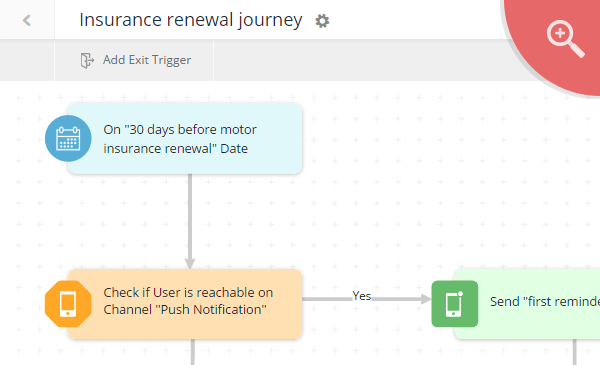
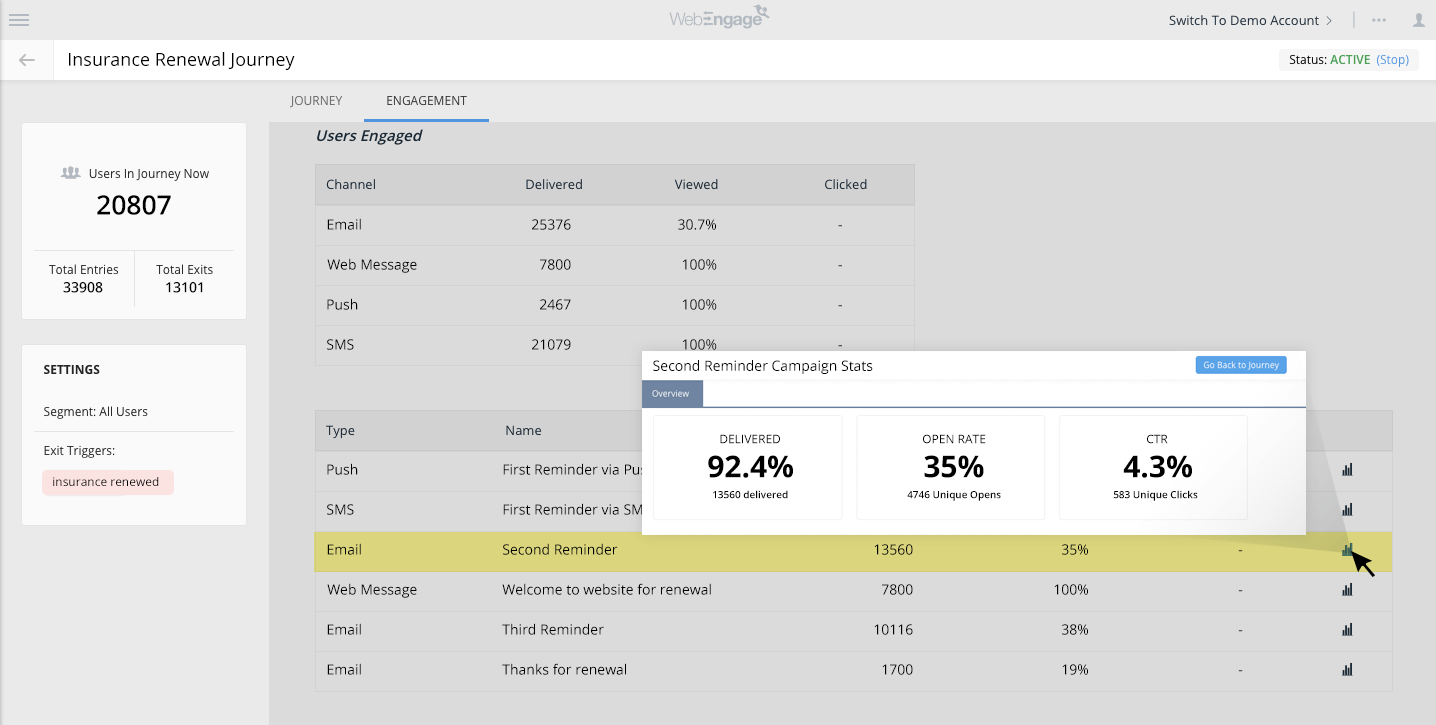
Over to YOU
We established that marketing channels have different characteristics, also enlisting their benefits and limitations. We also touched upon moments of truth and how influencing prospects during these moments is extremely rewarding. Followed by determining the right mix of marketing channels based on different use-cases, channel characteristics. And, we also looked at measuring effectiveness at campaign level as well as channel level.
Owing to these dynamic times marketing has become challenging plus exciting at the same time. I would like to know your thoughts on how you approach multi-channel marketing and the choice of channels for your marketing communication. Use the comments section to share your thoughts.
Delight Your Customers Like Never Before! Learn more about multi-channel engagement





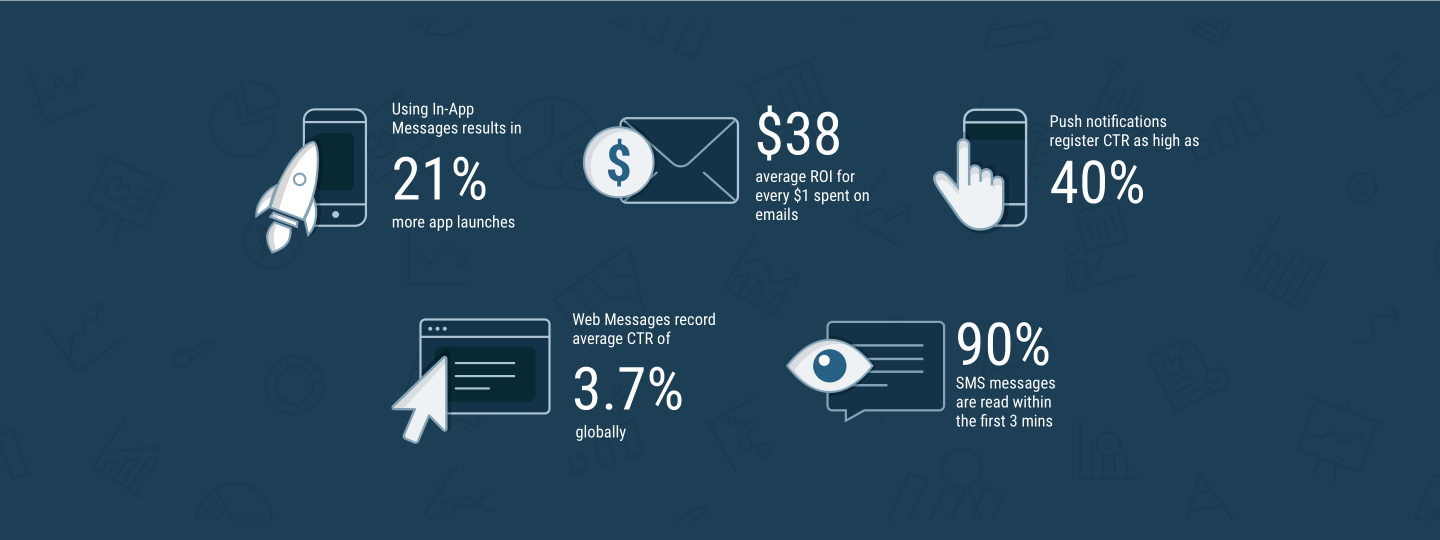

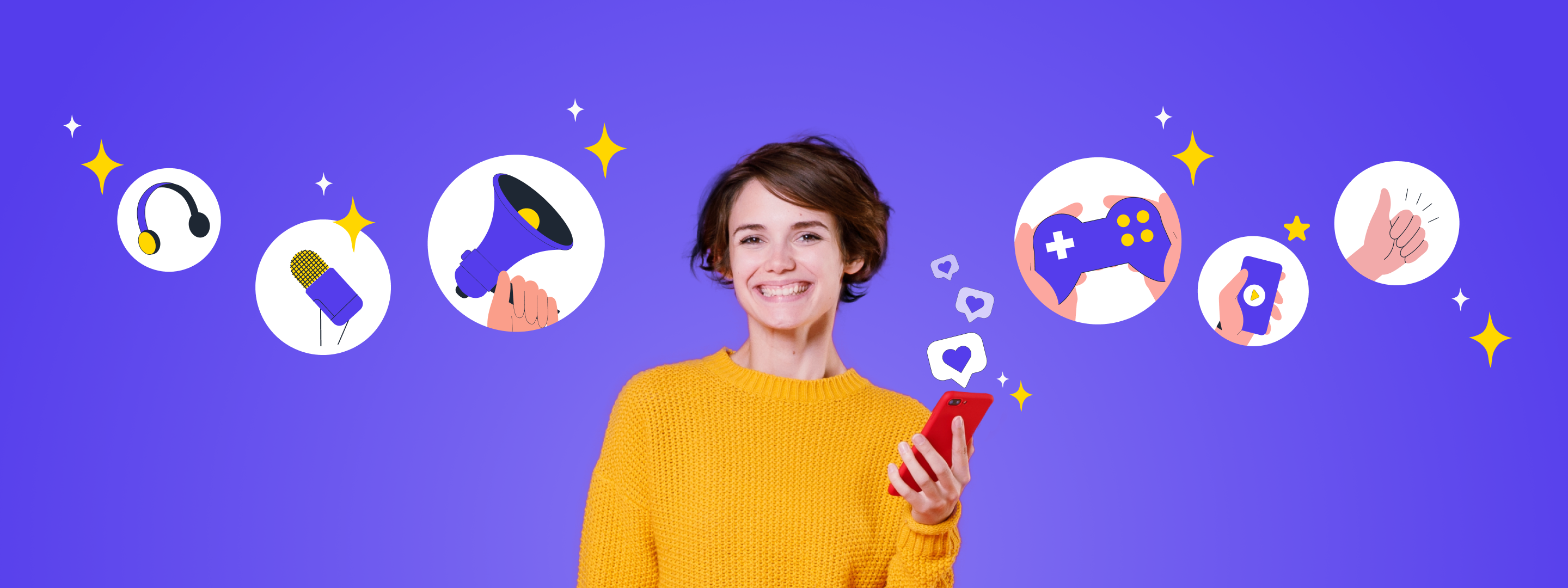
 Diksha Dwivedi
Diksha Dwivedi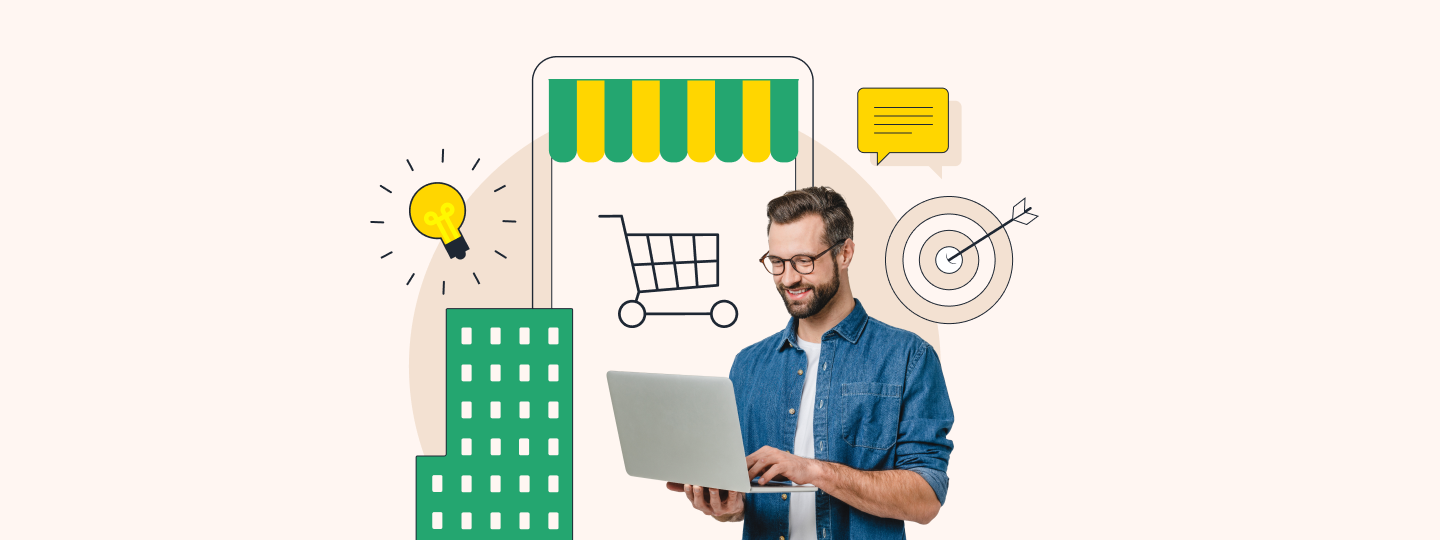
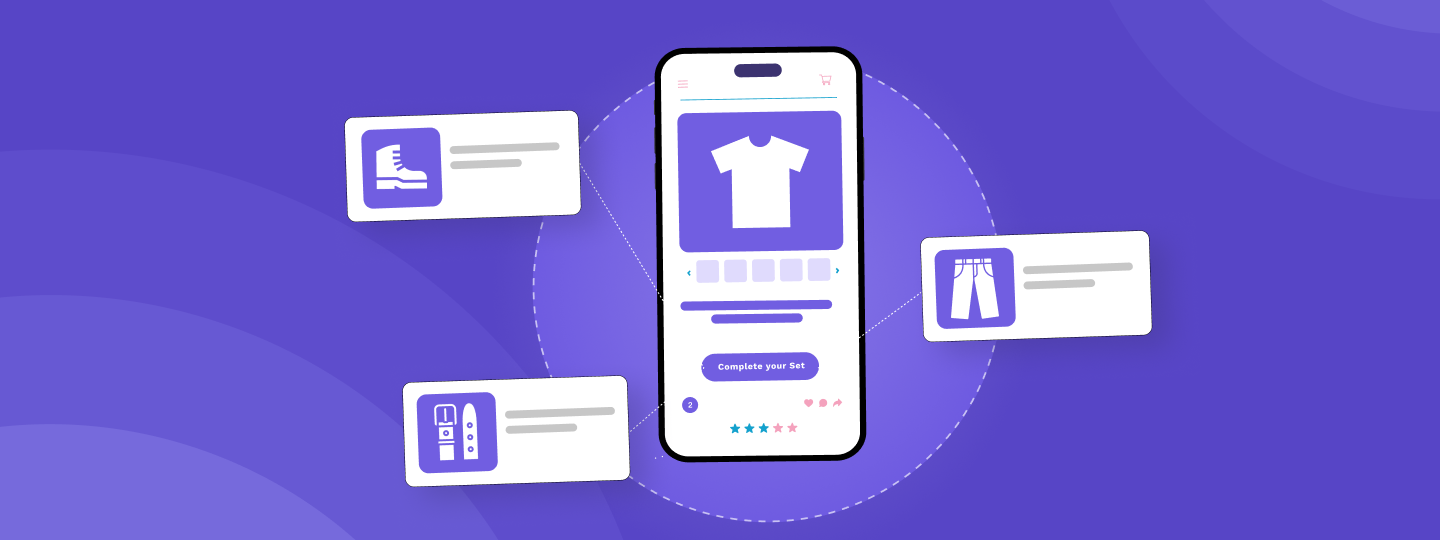
 Vanhishikha Bhargava
Vanhishikha Bhargava